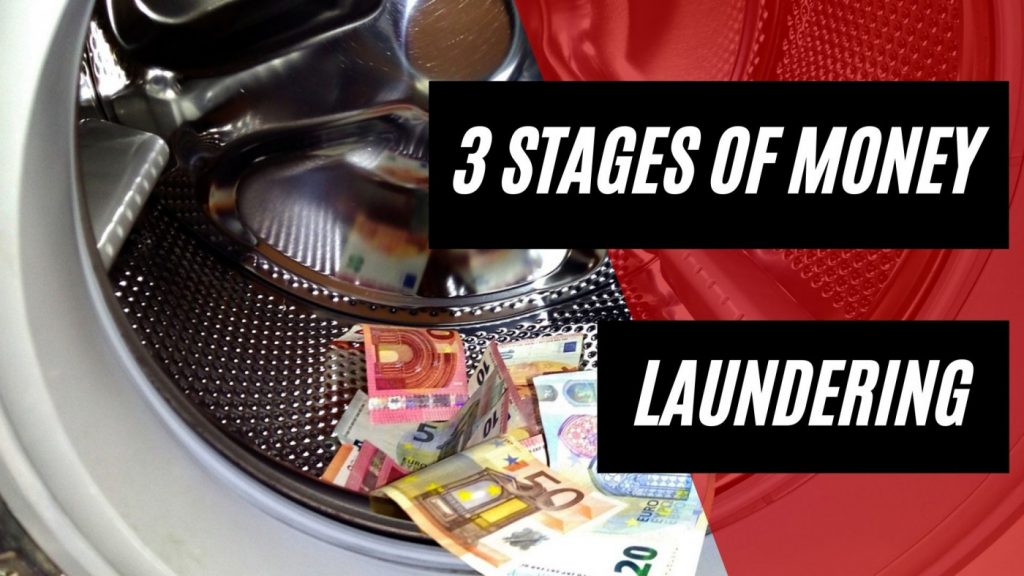Table of Contents
- How Does Money Laundering Work?
- Money Laundering Stage 1 – Placement
- Money Laundering Stage 2 – Layering
- Money Laundering Stage 3 – Integration
How Does Money Laundering Work?
Each day our world appears to become faster and more and more complex. Just alike, each day the methods used by money launderers become more sophisticated and the financial transactions more complex. Actually, there is no specific or single methodology of money laundering, and as in many other subject areas, a theoretical model was built to conceptually cover as many money laundering stages and methodologies as possible.
In the case of money laundering stages, this model was derived from money laundering methodologies that have been uncovered by law enforcement and government authorities. In practice, and despite the variety of methods employed, the laundering process is accomplished in three basic stages of which this model comprises. These steps can be taken at the same time in the course of a single transaction, but they can also appear in well separable forms one by one as well. These three stages are placement, integration, and layering.

Money Laundering Stage 1 – Placement
The first stage – the placement stage – represents the initial entry of the “dirty” cash or proceeds of crime into the legitimate financial system, for example by a simple deposit at a financial institution.
But there are countless ways for the placement of the cash. For example, cash could be packed into a suitcase and smuggled to a country, or the launderer could use so-called “smurfs” to defeat reporting threshold laws and avoid suspicion.
The “smurf” technique involves the use of many individuals (the “smurfs”) who exchange illicit funds (in smaller, less conspicuous amounts) for highly liquid items such as traveler cheques, bank drafts, or deposited directly into savings accounts. These instruments are then given to the launderer who then begins the layering stage. Ten smurfs could “place” over 1 million US-Dollar into financial institutions using this technique in less than 10 working days.
- Other examples for the placement of cash may include:
- Repayment of loans or credit cards with illegal proceeds
- Purchase of gambling chips or placing bets on sporting events
- The physical movement of illegal currency or monetary instruments over the border
- Purchasing foreign money with illegal funds through foreign currency exchange
- Using a legitimate cash focused business to co-mingle dirty funds with the day’s legitimate sales receipts
The placement of the cash serves two main goals:
- It relieves the criminal of holding and guarding large amounts of bulky of cash. Hereby, keep in mind that Money laundering is a “cash-intensive” business, generating vast amounts of cash from illegal activities (for example, street dealing of drugs where payment takes the form of cash in small denominations).
- It places the money into the legitimate financial system.
It is during the placement stage that money launderers are the most vulnerable to being caught. This is due to the fact that placing large amounts of money (cash) into the legitimate financial system may raise suspicions of officials.
Money Laundering Stage 2 – Layering
The second stage – the layering stage – is the process of separating the proceeds of criminal activity from their origin through the use of many different techniques to layer the funds.
Recall what we discussed when we were looking at what money laundering is. Disguising the illegal origin is one of the two key components of money laundering, and this generally takes place in the layering stage.
Layering activities can include using multiple banks and accounts, having professionals act as intermediaries and transacting through corporations and trusts, layers of complex financial transactions, such as converting cash into traveler’s checks, money orders, wire transfers, letters of credit, stocks, bonds, or purchasing valuable assets, such as art or jewelry.
All these transactions are designed to disguise the so-called paper trail or audit trail and provide anonymity for the criminals’ identity.
Layering usually involves a complex system of transactions designed to hide the source and ownership of the funds.
Once cash has been successfully placed into the financial system, launderers can engage in an infinite number of complex transactions and transfers designed to disguise the audit trail and thus the source of the property and provide anonymity.
One of the primary objectives of the layering stage is to confuse any criminal investigation and place as much distance as possible between the source of the ill-gotten gains and their present status and appearance.
There are many infamous examples for how complex the layering activities can get. Let’s take the so-called Operation Car Wash, involving, amongst others, the Brazilian company Odebrecht, a multinational conglomerate active in n the fields of engineering, construction, chemicals, and petrochemicals.
Using a complex network of shell companies, off-book transactions and offshore bank accounts, and a dedicated bribery division, Odebrecht paid more than 780 million US-Dollar in bribes to government officials, their representatives, and political parties in countries across Latin America and the Caribbean. This conduct helped it win contracts and other benefits totaling 3.34 billion US-Dollar, according to the U.S. Department of Justice, which has described the scheme as “massive and unparalleled.”
The U.S. investigated Odebrecht because the company was suspected of making illicit payments from bank accounts in New York City and because meetings were held in Miami.
Payments could pass through up to four offshore bank accounts before reaching a corrupt politician or political party. Odebrecht even bought an Antiguan branch of an Austrian bank to minimize the risk of arousing suspicion.
Amongst other consequences, In March 2016, Odebrecht’s chief executive – the grandson of the company founder – was sentenced to 19 years in prison for paying about 30 US-Dollar million in bribes.
Operation Car Wash makes the layering stage quite evident and shows some typical activates that are commonly conducted: Layers are created by moving monies in and out of the offshore bank accounts of bearer share shell companies through electronic funds’ transfers.
Given that there are over 500,000 wire transfers – representing in excess of 1 trillion US-Dollar – electronically circling the globe daily, most of which is legitimate, there isn’t enough information disclosed on any single wire transfer to know how clean or dirty the money is, therefore providing an excellent way for launderers to move their dirty money.
Other forms used by launderers are complex dealings with stock, commodity and futures brokers. Given the sheer volume of daily transactions, and the high degree of anonymity available, the chances of transactions being traced is insignificant.









